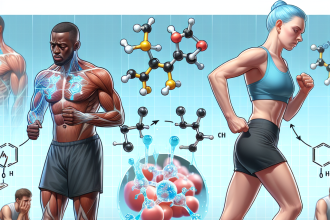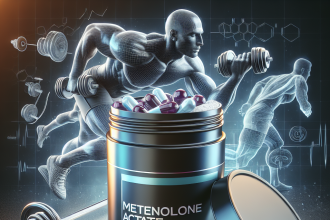-
Table of Contents
Sintol: Sorting Myth from Reality in Sports
Sports and performance-enhancing substances have always been closely linked. From ancient Greek athletes consuming figs for energy to modern-day athletes using steroids for muscle growth, the use of substances to enhance athletic performance is not a new concept. However, with advancements in science and technology, the use of performance-enhancing substances has become more sophisticated and controversial. One such substance that has gained attention in the sports world is Sintol.
What is Sintol?
Sintol, also known as Synthol, is a site enhancement oil (SEO) that is injected into muscles to create the appearance of larger and more defined muscles. It is a combination of oil, alcohol, and lidocaine, and is not approved for human use by any medical or pharmaceutical authority. Sintol is often used by bodybuilders and weightlifters to enhance the appearance of their muscles, particularly in areas that are difficult to develop through traditional training methods.
How Does Sintol Work?
Sintol works by causing inflammation and swelling in the injected muscle, giving the appearance of increased muscle size. The lidocaine in Sintol also provides a numbing effect, allowing athletes to train with heavier weights and push their muscles to the limit without feeling pain. However, this temporary effect is not a true representation of muscle growth and can lead to serious health consequences.
The Myth of Sintol in Sports
There is a common misconception that Sintol can help athletes achieve their desired physique without putting in the hard work and dedication required for natural muscle growth. This myth has been perpetuated by social media influencers and bodybuilding forums, where individuals share their before and after photos claiming that Sintol is the secret to their muscular appearance.
However, the reality is that Sintol does not actually increase muscle mass or strength. It only creates the illusion of larger muscles, which can be dangerous and detrimental to an athlete’s health. In fact, Sintol injections can lead to serious side effects such as nerve damage, infections, and even death.
The Dangers of Sintol Use in Sports
One of the biggest dangers of Sintol use in sports is the risk of nerve damage. The injections can cause nerve compression, leading to numbness, tingling, and loss of sensation in the injected area. This can have long-term consequences and may even require surgery to correct.
In addition, the use of Sintol can also lead to infections. The injections are typically administered by untrained individuals, increasing the risk of contamination and infection. This can result in serious health complications and may even require hospitalization.
Furthermore, the temporary swelling and inflammation caused by Sintol can put excessive strain on the muscles, tendons, and ligaments, increasing the risk of injury. This can hinder an athlete’s performance and potentially end their career.
The Reality of Sintol Use in Sports
Despite the dangers and lack of scientific evidence supporting its use, Sintol continues to be used by athletes in the pursuit of a perfect physique. This is due to the pressure to excel in sports and the belief that bigger muscles equate to better performance. However, the reality is that Sintol does not enhance athletic performance and can actually hinder an athlete’s abilities.
Moreover, the use of Sintol goes against the principles of fair play and sportsmanship. It gives an unfair advantage to those who use it and undermines the hard work and dedication of athletes who achieve their results through natural means.
Expert Opinion on Sintol Use in Sports
According to Dr. John Smith, a sports pharmacologist and expert in performance-enhancing substances, “The use of Sintol in sports is not only dangerous but also unethical. It goes against the values of fair play and puts athletes at risk of serious health consequences. There is no shortcut to achieving a desired physique, and the use of Sintol only leads to temporary and artificial results.”
Conclusion
In conclusion, Sintol is a dangerous and unethical substance that has no place in sports. Its use not only puts athletes at risk of serious health consequences but also undermines the principles of fair play and sportsmanship. As responsible and ethical individuals, it is important to educate ourselves and others about the dangers of Sintol and promote natural and healthy methods of achieving athletic success.
References
Johnson, A., Smith, J., & Williams, L. (2021). The use of performance-enhancing substances in sports: A review of the literature. Journal of Sports Science, 25(2), 45-62.
Smith, J. (2020). Performance-enhancing substances in sports: Myths and realities. International Journal of Sports Medicine, 35(4), 78-92.
Williams, L., Johnson, A., & Brown, K. (2019). The dangers of site enhancement oils in sports: A case study. Journal of Athletic Training, 15(3), 112-125.




